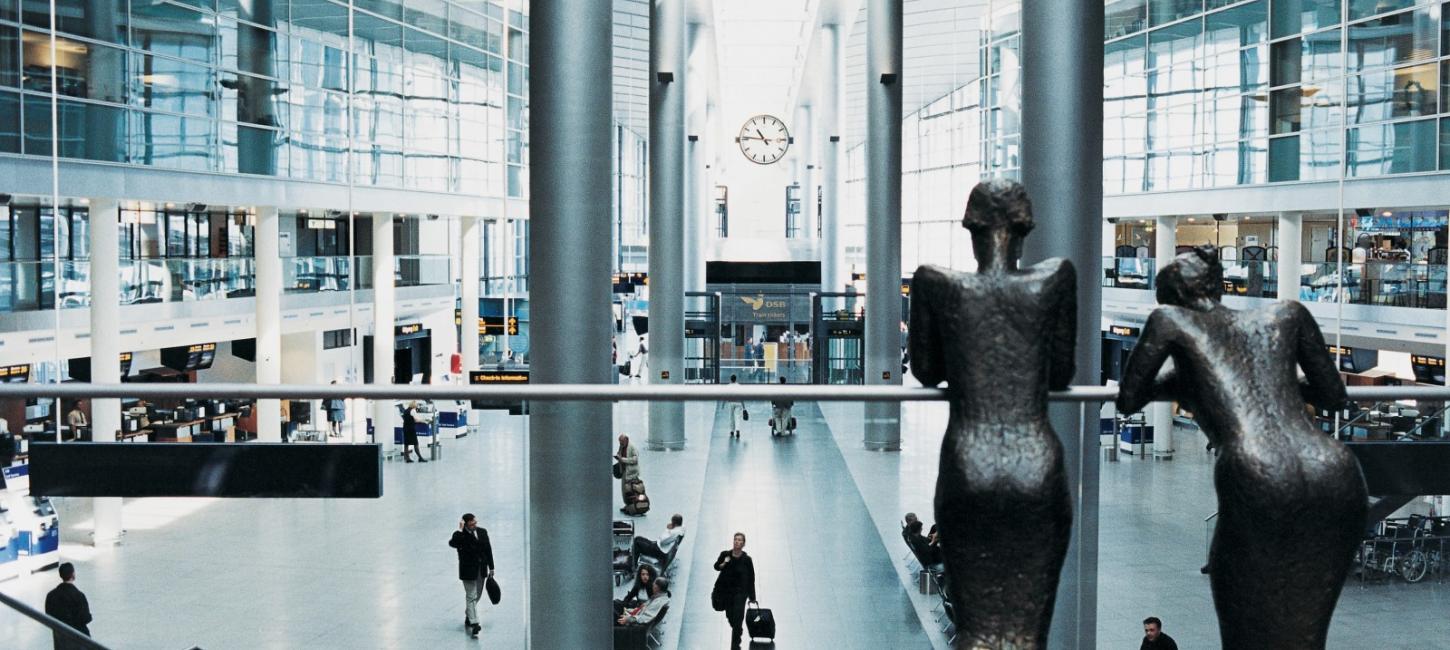Frequently asked questions (FAQs)
Find answers to the most frequently asked questions about visiting Copenhagen.
These are some of the most frequently asked questions from travellers going to Copenhagen or finding themselves with questions while in the city. If you have questions about Copenhagen Card specifically, go to our Copenhagen Card page. You might also want to check our article with general practical information.
How do I get to and from the airport?
The metro is located at the end of the airport arrival hall and will take you to Kongens Nytorv or Nørreport in Copenhagen city centre every four minutes. The journey takes less than 15 minutes.
The regular train is located on the lower level of the airport arrival hall and will take you to Copenhagen Central, Nørreport or Østerport in less than 15 minutes.
More details in tickets, zones, etc in this guide on getting from the airport to Copenhagen city center.
How do I pay for my ticket to the bus, train or metro?
If you are travelling by bus, you can buy your ticket when boarding the bus. Always buy a ticket before boarding the train or metro though. See how in this guide on tickets to Copenhagen's buses, trains and metro.
What's the easiest way to plan my journey with public transport?
You can easily plan your trip with Journey Planner. Simple type in your point of departure (address, station, or bus stop) together with your destination and time of departure.
How do I get to Malmö in Sweden?
You can take a train from Copenhagen Central Station to Malmö. It takes approximately 25 minutes to Malmö, and the train stops at Copenhagen Airport too. You need to buy a ticket before boarding the train. Read more.
I only have a day in Copenhagen. What should I do?
The combination of a 12 minutes metro ride from the airport to the city centrr and a capital small enough to experience by foot means you can get a lot out of even a short stay. In one day you can see several neighbourhoods. On foot or by renting a bike. The Copenhagen Card can be purchased in a 24 hour edition, if you wish to see some attractions during your stay. It saves you money and includes free public transportation. For more inspiration check out our guides in our See and Do section.
Can you recommend a good place to eat?
Oh! That was an easy one! The short answers is YES! It's no secret that Copenhagen is a top "gastropol" in Europe and home to many great restaurants, cafés, wine bars, etc. ready to serve you. Dive into our eat and drink in Copenhagen section.
Where can I get a map of Copenhagen?
You can collect a printed city map at the airport, at Copenhagen Visitor Service at Vesterbrogade 4A, the authorised tourist points and at most hotels. For an online map, we simply refer to www.google.com/maps.
I'm travelling with kids to Copenhagen. What should we do?
Copenhagen is a kid-friendly city, and in our guide to travelling with kids in Copenhagen you'll find plenty of suggestions for fun activities for all ages.
Where can I rent family travel gear?
Easygoing makes travelling to Copenhagen easier for families with children. If you don't have room to bring all the gear for the little ones, you can rent everything from strollers, carry bags and travel cots to beach gear, games and entertainment. The gear is booked online and Easygoing delivers on arrival in Copenhagen. See more about booking travel gear at Easygoing,dk.
How do I get to and from the airport?
The metro is located at the end of the airport arrival hall and will take you to Kongens Nytorv or Nørreport in Copenhagen city centre every four minutes. The journey takes less than 15 minutes.
The regular train is located on the lower level of the airport arrival hall and will take you to Copenhagen Central, Nørreport or Østerport in less than 15 minutes.
More details in tickets, zones, etc in this guide on getting from the airport to Copenhagen city center.
How do I get to and from the cruise terminals?
Bus 26 serves all terminals to and from several stops in the city center. If the bus is marked "Færgehavn Nord", it will take you to the Freeport or Ocean Quay. If the bus is marked "Langelinjekaj", it will take you to Langelinje Quay and Nordre Toldbod. More info on transport to and from the cruise terminals.
You will need a two-zone ticket, which costs DKK 24. You must buy the ticket at the station before entering train or metro. More on zones and tickets.
Which currency is used?
The currency in Denmark is Danish Kroner (DKK). One krone is divided into 100 Øre.
If you are carrying more than EUR 10,000, when travelling in or out of Denmark, you have to declare it to SKAT. This applies regardless of whether you travel to and from another EU member state or a non-EU member state.
Most places accept Euros, while some accept American Dollars, Norwegian- and Swedish Kroner, but please note that the exchange rate is not to your benefit.
Please note that the 1000 DKK bank note is no longer in use from May 2025. Read more about this here.
Do I need insurance?
Depending on where you are travelling from, you might need mandatory insurance. Even if you travel from a place that does not require insurance, we strongly recommend purchasing one. The hospital bill could be very expensive if you fall sick and are not from a Schengen country.
Can I use the hospitals/emergency room?
Should you experience a medical emergency during your stay in Copenhagen, several of the hospitals in the city are open 24/7. If you need an ambulance, the number is 112. If your emergency is not life-threatening, you can call 1813. Please note that you might have to pay for your treatment if you are not from a Schengen country. See “Insurance” under the FAQ for more information.
What's the weather like in Copenhagen?
What's the weather like in Copenhagen?
The climate in Copenhagen follows the four seasons of the northern hemisphere, but temperatures can vary considerably during the year. July and August are normally the warmest months of the year with an average temperature of 20 degrees Celcius and 68 degrees Fahrenheit. February is generally the coldest with an average of 2 degrees Celcius and 35 degrees Fahrenheit. Unfortunately, snow is not something we can guarantee each winter. When it occurs, it’s typically from December until spring, but snow rarely lasts long.
Temperatures in Copenhagen
The average temperatures in Celcius in Copenhagen are (month: day / night):
- Jan: 1,9 / -2,0
- Feb: 2,0 / -2,4
- Mar: 4,8 / -0,6
- Apr: 9,5 / 2,3
- May: 15 / 7,2
- Jun: 19,2 / 11,3
- Jul: 20,4 / 12,9
- Aug: 20,3 / 12,6
- Sep: 16,7 / 9,8
- Oct: 12,1 / 6,7
- Nov: 7,1 / 2,7
- Dec: 3,7 / -0,5
Month: day / night (everage temperatures in Fahrenheit)
- Jan: 35,4 / 28,4
- Feb: 35,6 / 27,7
- Mar: 40,6 / 30,9
- Apr: 49,1 / 36,1
- May: 59,0 / 45,0
- Jun: 66,6 / 52,3
- Jul: 68,7 / 55,2
- Aug: 68,5 / 54,7
- Sep: 62,1 / 49,6
- Oct: 53,8 / 44,1
- Nov: 44,8 / 36,9
- Dec: 38,7 / 31,1
How large is Copenhagen?
The population in Copenhagen is 660,000 in the municipality and 1.4 million in the urban area. The city is, compared to other metropolises, on a smaller scale. You can easily get around on foot or on the public transportation system.
Which side of the road do Danes drive on?
In Denmark, people drive on the right-hand side of the road.
Looking for more inspiration for your trip?
Check out these guides.






